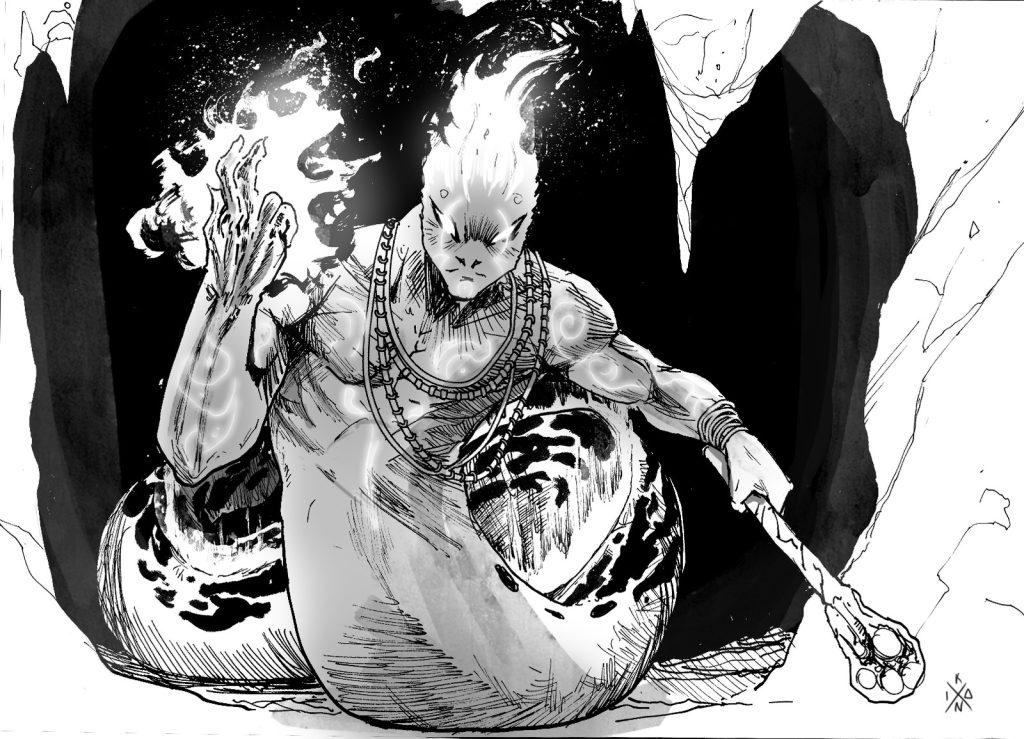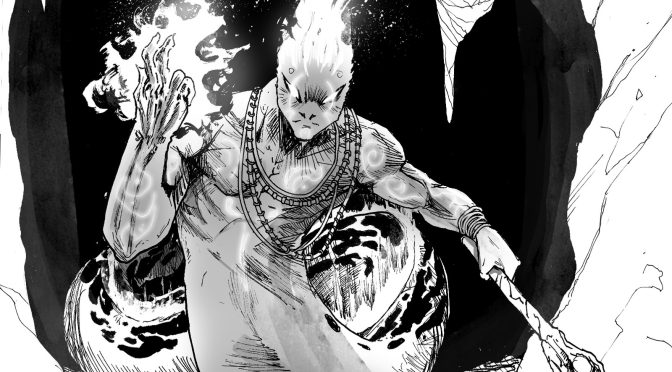Much of what the ancient Basques believed about the world around them has been lost to time. Without a written record, we don’t know what beings or deities they worshipped, certainly not to the same extent as the Greek or Norse pantheons. While it seems the Basques believed in a Mother-Earth goddess – Mari – there was a time when she had a companion, an equal, who accompanied her: Sugaar. With the advent of Christianity, he became ever more associated with evil, a being that parents would invoke to scare their misbehaving children.

- Sugaar, sometimes called Maju, flies across the sky in the shape of a sickle or a crescent of fire and is usually the harbinger of storms. In some places, he is said to be made of pure fire, with no head or tail. In others, he takes the form of lightning. He lives underground, and comes to the surface through the myriad caverns and chasms that are sprinkled across the Basque landscape.
- However, his name — Sugaar — means male snake. Thus, though he often takes the form of fire or lightning, his true form is of a serpent or dragon. At least one of his homes is the Aralar mountains, the same place where Teodosio de Goñi fought a dragon, possibly suggesting a common origin to the myths.
- He is considered the consort of Mari. In some places, they say that Sugaar/Maju and Mari meet every Friday, in some places so he can do her hair. In others, they say that, when the two meet, they erupt into a storm.
- Basque isn’t the only culture with a Mother-Earth like goddess and a Serpent god paired up. In Italy, on Monte Vettore, there is a cave dedicated to the goddess Sibyl that is guarded by a half-man, half-serpent named Macco. The Pelasgians worshipped a godly couple, the Serpent God Ophion and the Earth Mother figure Eurynome. In Near East cultures, there are the Sumerian couples Enki and Damkina and the Hurrian-Hittite Hedammu and Ishtar. This doesn’t prove any connection between the Basque gods and these other deities, but it does highlight the frequency that snake-gods and earth-goddesses have been coupled in the human imagination. It also suggests how old this pairing might be.
- Sugaar’s visits with Mari typically have a sexual backdrop, suggesting that he is fertilizing Mother Earth. He is the water — the rain or the rivers — that fertilize the ground. Similarly, the union of Ofion and Eurynome gave rise to creation.
- Today, Mari is seen as the head of the Basque pantheon, but Sugaar may have been her equal in ancient times. Mari’s association with the Virgin Mary and the connection of snakes with evil could have simultaneously elevated Mari and demoted Sugaar. Sugaar’s past importance is also evident in the story of Jaun Zuria, the first lord of Bizkaia, whose lineage reached back to the serpent-god.
Primary sources: Hartsuaga Uranga, Juan Inazio. Sugaar. Auñamendi Encyclopedia. Available at: https://aunamendi.eusko-ikaskuntza.eus/en/sugaar/ar-108780/
Discover more from Buber's Basque Page
Subscribe to get the latest posts sent to your email.



wow! no sugaar daddy!! Monique
Hi,
Wonderful to find you and your writing and art and thoughts. As I understand Basque was matriarchal, Mari’s authority will be greatest yet not diminishing Sugaar’s as they are one of the same in a way much like yin and yang. There must always be growth and destruction hence Mari and Sugaar. One really isn’t better than the other. People would think much about having Mari in their life for joy and love and happiness, health, wealth and family and this would elevate her during daily life to beloved savior yet Sugaar would protect and defend and destroy evil and disease and enimies so when this was desired he was thought of much more and during these times would be elevated to beloved savior. I like how you explain the similarity of them to other cultural deities. I like that you reference your findings, it gives extra reading and information to fill in your ideas. Great read. Wonderful to hear more about Basque culture too.
Thank you for the kind words. As a scientist, I try to provide evidence for what I write so that others can judge for themselves the veracity of my statements. There is a lot of speculation and misinformation out there and I try my best to be as clear as possible.